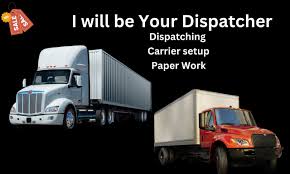When was the last time you thought about how much your eyes do for you every single day? From reading to driving, from working on construction sites to enjoying outdoor sports, our vision is constantly exposed to risks. This is where protective eyewear, safety eyeglasses, and work safety glasses step in as silent guardians. They don’t just prevent accidents—they ensure that your future vision remains intact.
Today, workplaces worldwide are prioritizing safety eyewear because statistics show that 90% of all workplace eye injuries could be prevented with the correct use of protective glasses. This article dives deep into every aspect of safety eye glasses—from types, benefits, certifications, to the latest technological innovations—so you can make the best choice for yourself or your workforce.
Protective Eyewear
Definition and Purpose
Protective eyewear refers to specialized glasses designed to shield the eyes from hazards such as flying debris, dust, chemicals, or harmful radiation. Unlike regular glasses, they meet strict safety standards and offer features tailored for hazardous environments.
Evolution of Protective Glasses
From early rudimentary goggles used in mining to today’s lightweight polycarbonate designs, protective eyewear has come a long way. Modern safety glasses balance comfort, aesthetics, and superior protection.
Importance in Industrial Workplaces
Industries like construction, welding, and manufacturing have high-risk environments. Workers handling machinery, chemicals, or heavy-duty tasks rely on protective eyewear to reduce accidents, maintain productivity, and comply with OSHA guidelines.
Everyday Uses Beyond the Workplace
Interestingly, safety glasses aren’t limited to workplaces. Gardeners, cyclists, woodworkers, and even healthcare workers depend on protective eyewear daily. Whether you’re mowing your lawn or performing lab experiments, protective glasses serve as a barrier between your eyes and potential harm.
Safety Eyeglasses
Standards and Certifications Explained
The most trusted safety glasses comply with ANSI Z87.1 or OSHA regulations. These certifications guarantee impact resistance, UV protection, and overall durability. Without proper certification, eyewear is simply not reliable.
Materials Used in Safety Eyeglasses
Polycarbonate is the gold standard—offering lightweight yet extremely durable lenses. Some high-end safety eyeglasses also use Trivex, known for optical clarity.
Prescription vs. Non-Prescription Safety Glasses
Workers with vision correction needs no longer have to compromise. Prescription safety glasses combine vision correction with industry-standard eye protection.
Lens Technologies: Anti-Fog, Scratch-Resistant, UV Protection
Modern lenses now include anti-fog coatings, anti-scratch layers, and UV filters. These features ensure long-lasting clarity and reduce distractions during critical tasks.
Safety Eye Glasses
Difference Between Regular and Safety Eye Glasses
While regular glasses focus on vision correction, safety eye glasses are designed to endure high impacts and shield eyes from workplace hazards.
Impact Resistance Testing
Safety glasses undergo rigorous testing—dropped ball tests, high-mass impact trials, and more—to ensure maximum resilience.
Benefits for Outdoor Workers
Outdoor workers benefit from tinted or photochromic lenses that adapt to changing light conditions while still offering protection.
Stylish Designs for Safety and Comfort
Gone are the days of bulky, unattractive safety frames. Modern safety eyeglasses now merge style with protection, ensuring compliance without sacrificing confidence.
Work Glasses
Why Every Worker Needs Proper Eye Protection
According to the CDC, thousands of workplace eye injuries occur daily. The right pair of work glasses could mean the difference between temporary discomfort and lifelong vision loss.
Role in Reducing Workplace Accidents
Work glasses not only shield eyes but also encourage employees to focus better, knowing they’re protected. Productivity naturally improves when workers feel safe.
Industries Where Work Glasses Are Essential
Construction, oil and gas, laboratories, healthcare, automotive, and welding industries rely heavily on work safety glasses.
Ergonomics and Comfort for Long Hours
Lightweight frames, cushioned nose pads, and wraparound designs reduce fatigue, making them suitable for long working hours.
Safety Eyewear
OSHA and ANSI Compliance
Compliance isn’t optional—it’s mandatory. OSHA enforces workplace safety rules, and ANSI certifications back up claims of impact resistance and protection.
How Employers Can Ensure Compliance
Employers must supply certified safety eyewear, conduct regular training, and ensure employees understand the importance of consistent use.
Safety Training for Employees
Workers should learn how to select, wear, and maintain protective glasses to maximize effectiveness.
Case Studies of Eye Injury Prevention
Companies that implemented strict eyewear policies reported up to a 60% drop in workplace eye injuries. Real-world data proves that safety eyeglasses save both lives and money.
Protective Glasses
Types of Protective Glasses (Chemical, Dust, Radiation)
Different tasks require specific eyewear. Chemical-resistant goggles, dust-proof safety glasses, and radiation-protective lenses each serve unique purposes.
Features to Look for When Buying Protective Glasses
Always check for certification, comfort, ventilation, and lens clarity. Adjustable straps and anti-fog coatings enhance usability.
Cost vs. Value: Are Expensive Glasses Worth It?
While premium safety glasses cost more upfront, they last longer, resist scratches, and often include advanced coatings—making them a cost-effective investment.
Work Safety Glasses
Choosing the Right Fit
Poorly fitted glasses reduce effectiveness. Proper sizing ensures full coverage and comfort.
Best Brands Known for Work Safety Glasses
Brands like Wiley X, 3M, and Pentax are industry leaders known for reliable and stylish safety eyewear.
Maintenance and Cleaning Tips
Use microfiber cloths, avoid abrasive cleaners, and store glasses in protective cases. Proper care extends lifespan and ensures clarity.
Common Mistakes to Avoid with Safety Glasses
Not replacing scratched lenses, using uncertified eyewear, or wearing ill-fitting glasses are common mistakes that compromise safety.
Safety Work Glasses
Technological Advancements in Safety Work Glasses
Innovations include lightweight frames, shatterproof polycarbonate, and adaptive lenses for dynamic environments.
Smart Safety Glasses and Augmented Reality Integration
Some safety glasses now include heads-up displays, AR overlays, and real-time hazard detection—blending technology with safety.
Environmental Sustainability in Safety Eyewear
Eco-friendly materials and recyclable frames are now being adopted by leading manufacturers.
The Future of Safety Work Glasses
Expect AI-powered smart glasses, enhanced ergonomic designs, and greater customization for industries and individuals.
Conclusion
Your eyes deserve nothing less than the best protection. Whether you’re a welder, lab technician, or weekend DIY enthusiast, protective eyewear, safety eyeglasses, and work safety glasses are vital. They don’t just prevent injuries—they safeguard your career, productivity, and quality of life. Invest wisely in certified, comfortable, and stylish safety glasses to ensure lasting vision health.
FAQs
What are safety eyeglasses used for?
They protect eyes from impact, dust, debris, chemicals, and harmful UV rays in workplaces and outdoor environments.
Are safety eye glasses different from regular glasses?
Yes. Regular glasses correct vision, while safety glasses are tested to resist impact and provide protective features.
Can I get prescription safety eyeglasses?
Absolutely. Prescription safety glasses are available and meet the same protective standards as non-prescription ones.
How do I know if my safety eyewear is certified?
Look for ANSI Z87.1 or OSHA compliance markings on the frame or lenses.
Do safety work glasses come in stylish designs?
Yes. Modern safety glasses combine style and protection, encouraging workers to wear them consistently.
How often should I replace protective glasses?
Replace them if lenses are scratched, frames are damaged, or certification markings wear off.

